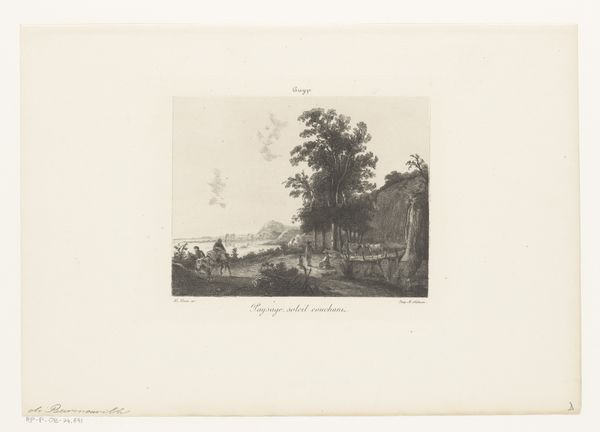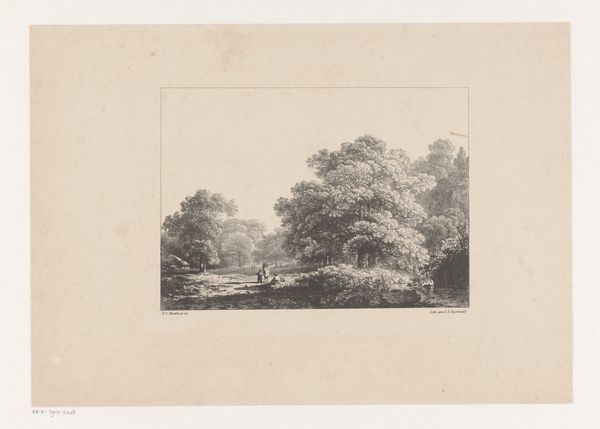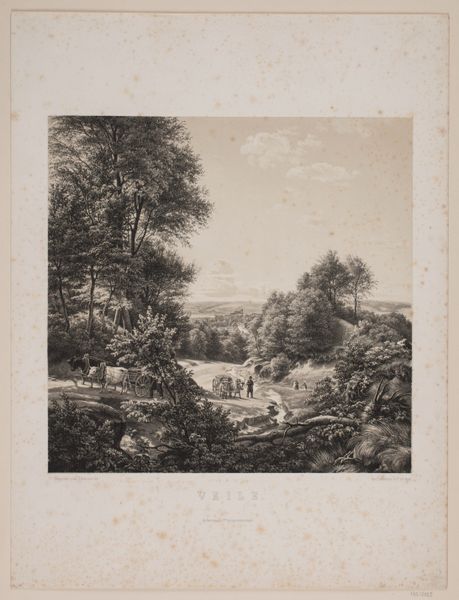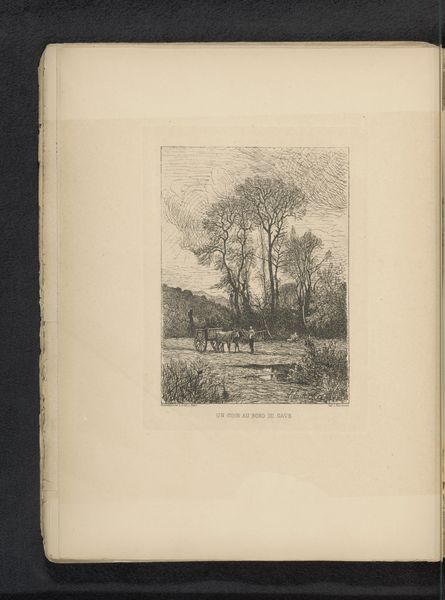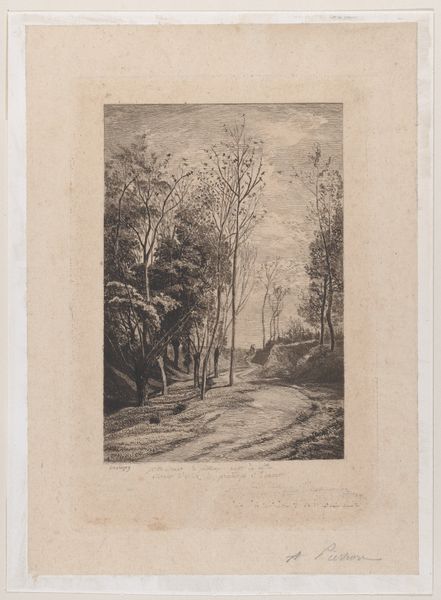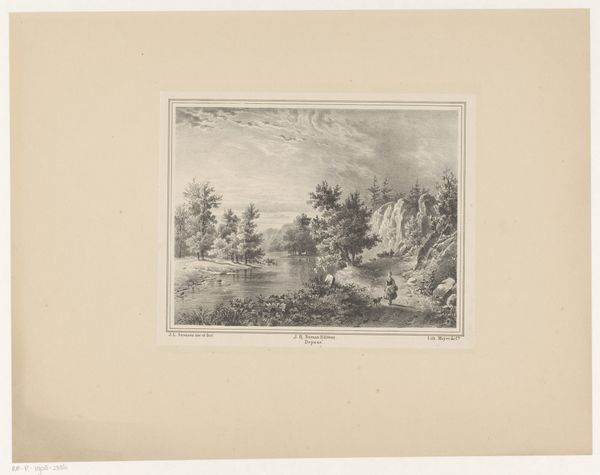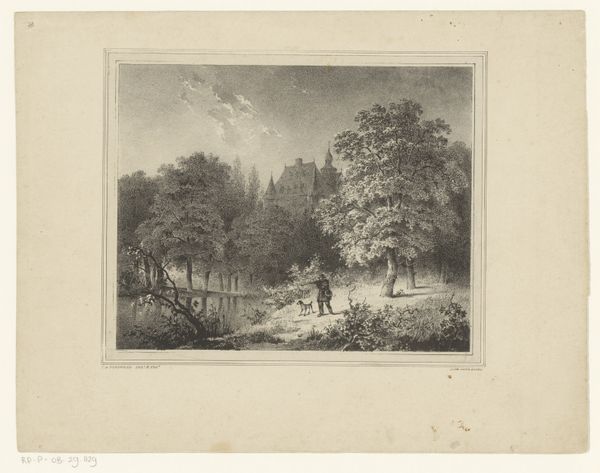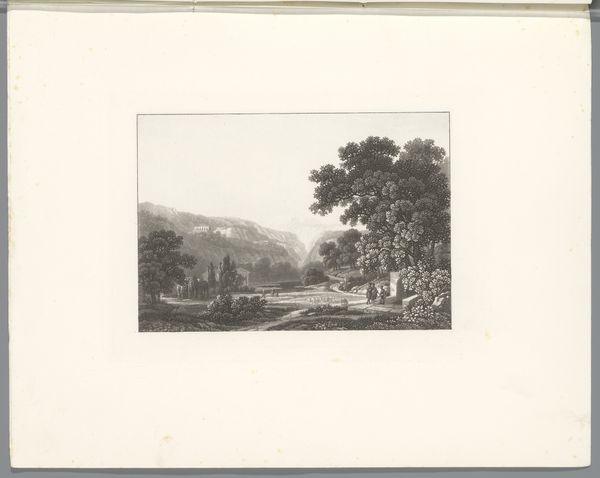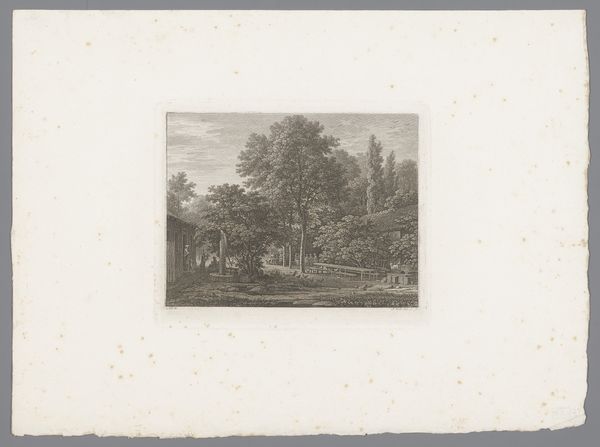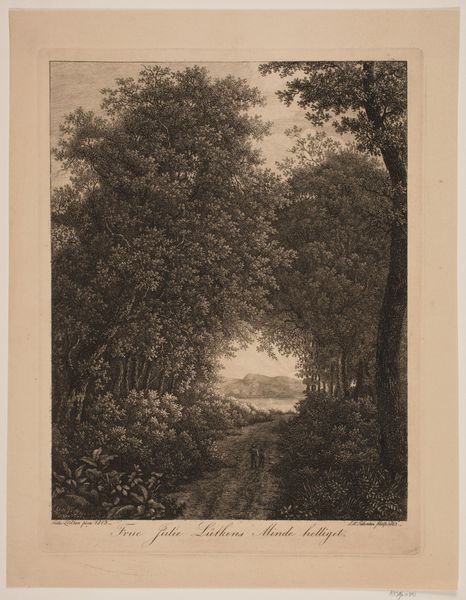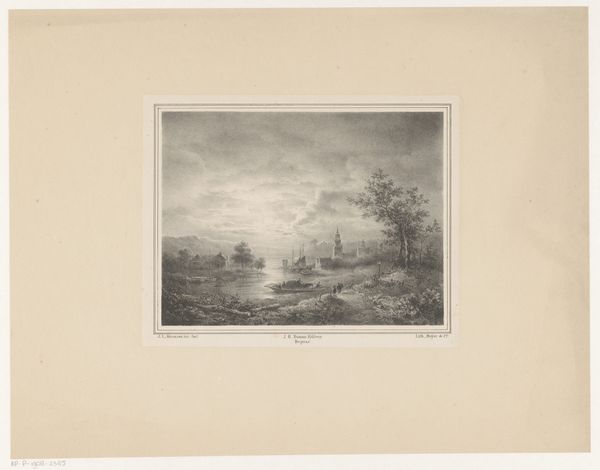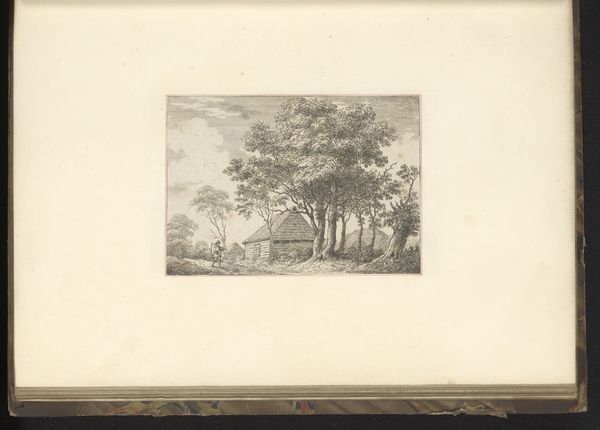
Landschap, met op de achtergrond de Berger Kirche en Stuttgart, Duitsland before 1875
0:00
0:00
Dimensions: height 200 mm, width 251 mm
Copyright: Rijks Museum: Open Domain
Curator: Looking at this piece, my immediate reaction is one of serene stillness, despite the subject. It has an almost dreamlike quality. Editor: The work before us is a photograph entitled "Landschap, met op de achtergrond de Berger Kirche en Stuttgart, Duitsland" or "Landscape with the Berger Church in Stuttgart, Germany, in the Background" dating from before 1875 and held here at the Rijksmuseum. Its author is Georg Maria Eckert, and we see a prime example of Pictorialism in photography. Curator: Dreamlike, yes! I think it’s the stark contrast between the close, very detailed trees and foliage, with that ghostly, almost faded background of the city. What kind of story do you think it’s trying to tell? Editor: It’s interesting to frame that contrast within the social and political landscape of the late 19th century. The rapid industrialization of cities like Stuttgart created a stark division between urban and rural life. Eckert, through his deliberate composition, highlights the tension—perhaps even the yearning—between them. Curator: Ah, so it's less about the specific place and more about that push and pull we all experience. The church, the path…are they symbols of something larger do you think? I can't help seeing that path as the path of life, leading you into that blurry future. Editor: That path, the central element, leads directly towards the Berger Kirche. Churches served as a central point of community identity and spiritual life; a focal point offering a sense of continuity and solace amidst change, so a “path to faith” or "faith in the future". Yet even faith blurs at a distance, time, and change… Curator: That melancholy… it is a strong emotional note for sure! All this talk is making me want to pack a bag and follow it, knowing that whatever’s waiting, it's alright. I appreciate Eckert’s work now on a whole new level. Editor: Precisely. It invites us to reflect not just on Stuttgart in the late 19th century, but on our relationship with change, faith, and memory itself, and how the past affects us all today, artist and audience.
Comments
No comments
Be the first to comment and join the conversation on the ultimate creative platform.


